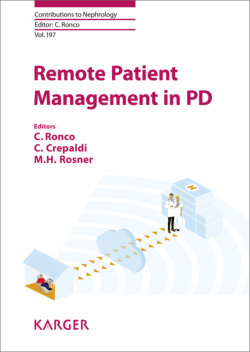Читать книгу Remote Patient Management in Peritoneal Dialysis - Группа авторов - Страница 17
На сайте Литреса книга снята с продажи.
Unplanned and Urgent Start PD
ОглавлениеApproximately, 30–40% patients (in North America, Europe) start dialysis without a functioning permanent access, that is, an arteriovenous fistula or a PD catheter. A sudden deterioration in renal function due to superimposed acute kidney injury with subsequent non-recovery, lack of in-depth discussions between the patients and nephrology team regarding “personalized best fit modality,” and inadequately functioning arteriovenous fistula at the start of hemodialysis lead to increased use of intravenous catheters for dialysis (a major determinant of morbidity and mortality in ESRD). Several studies across the world [22–24] have now shown success of “Urgent PD start” using low volume exchanges in supine position without waiting for the traditional 2-week catheter break-in period. Although peritoneal catheter leaks and mechanical obstruction continue to be a hurdle for success of this modality [25], several centers have shown close to 18–30% increase in PD utilization after the implementation of an “Urgent Start” program. In the USA, more programs are adapting to the idea of “Transitional Care Units” where the “crash starts with catheters” are provided assisted hemodialysis within the first few weeks in a separate unit. During this time, patients and their families are educated about the advantages and disadvantages of home-based therapies, resulting in increased uptake of PD [26]. In the US, significant efforts by nephrology community towards imparting knowledge of mechanics, procedures, and advantages of home dialysis has been achieved. Reinvigorated interest in home-based therapies, backed by financial incentives provided by the government, may continue to increase the PD utilization over the next several years [27].
